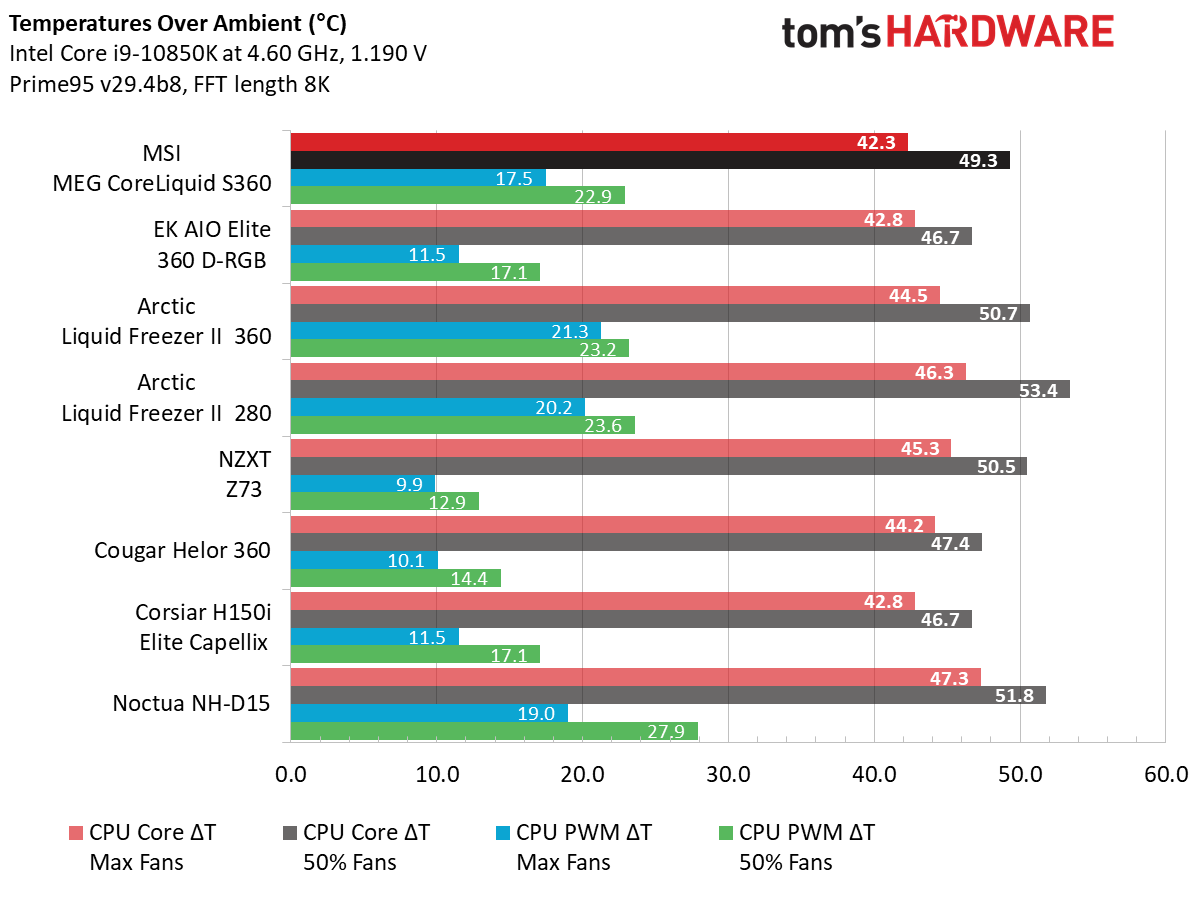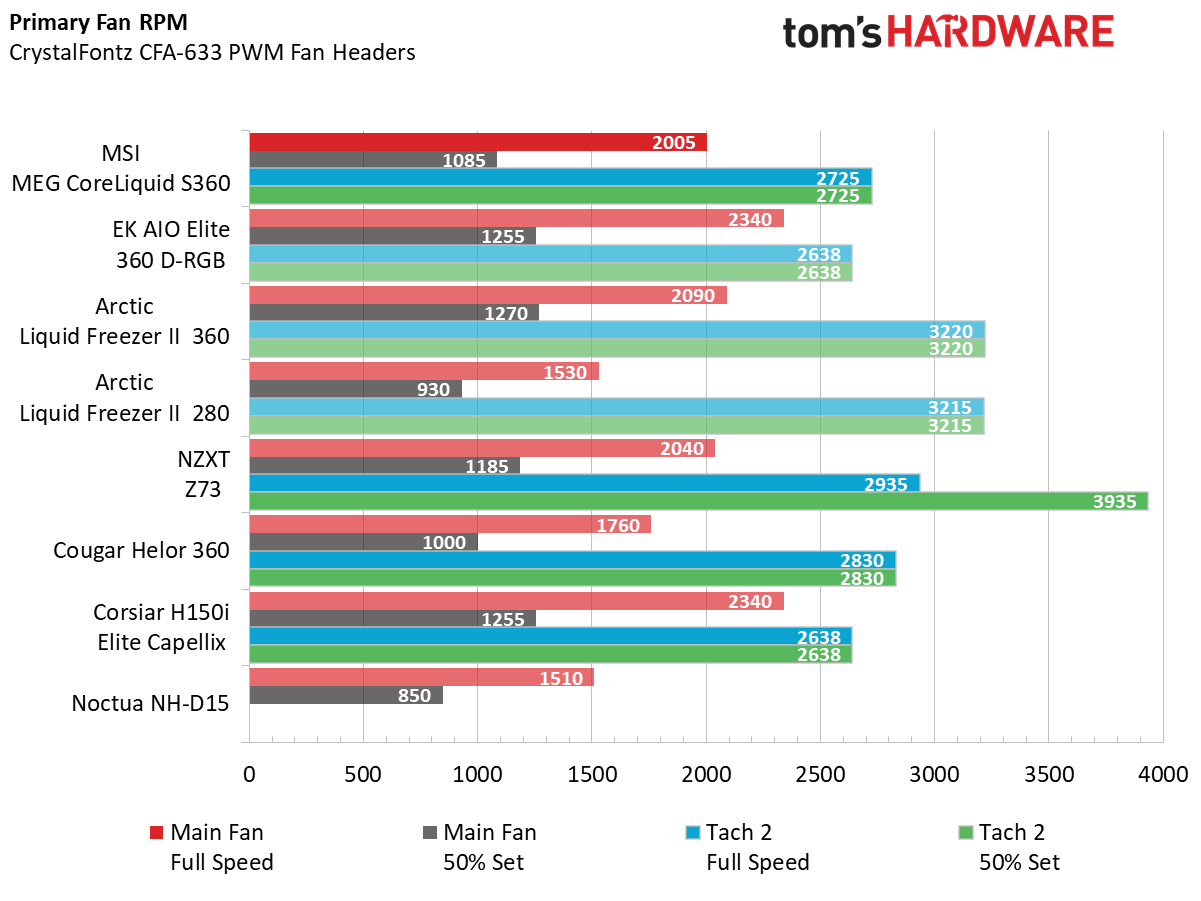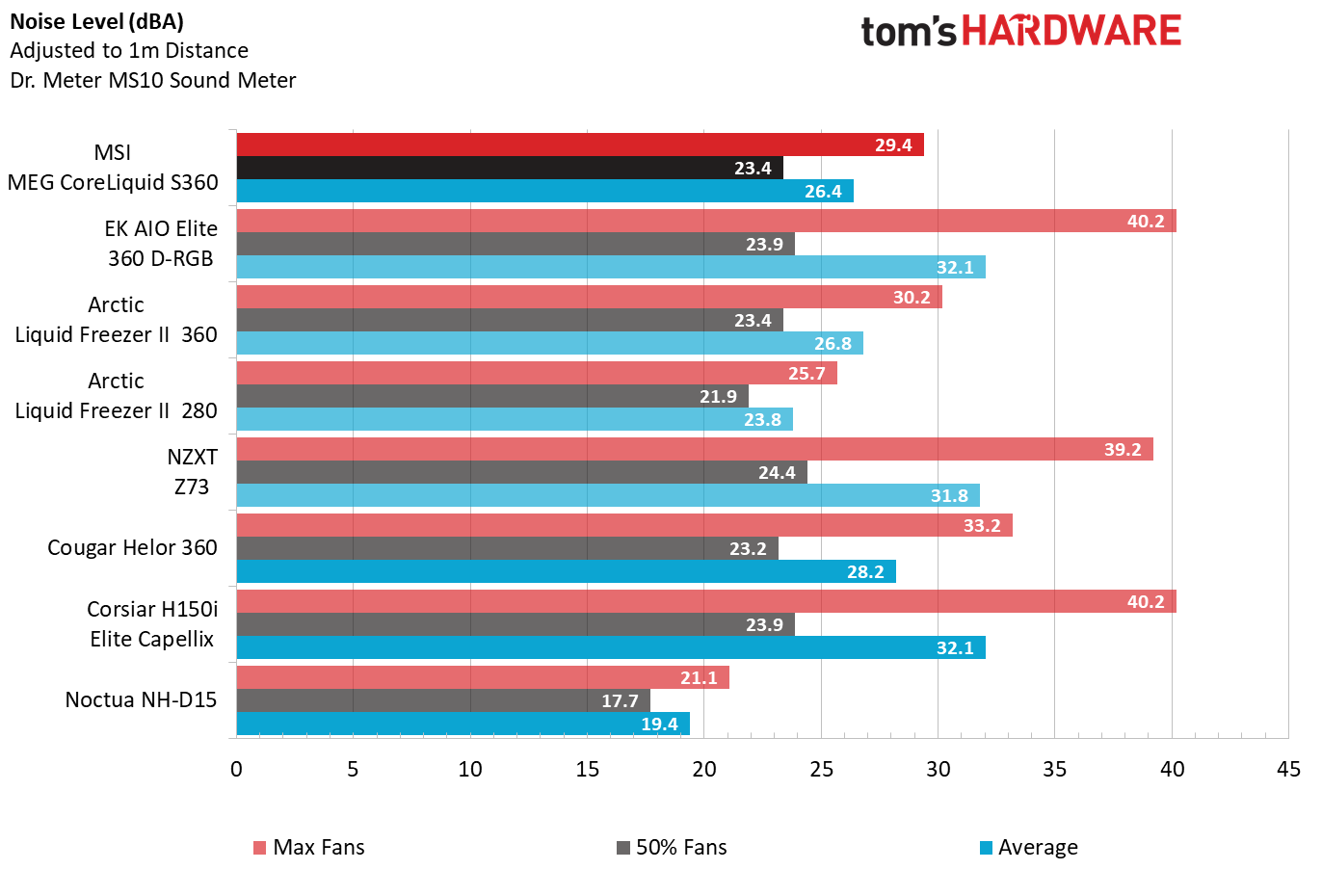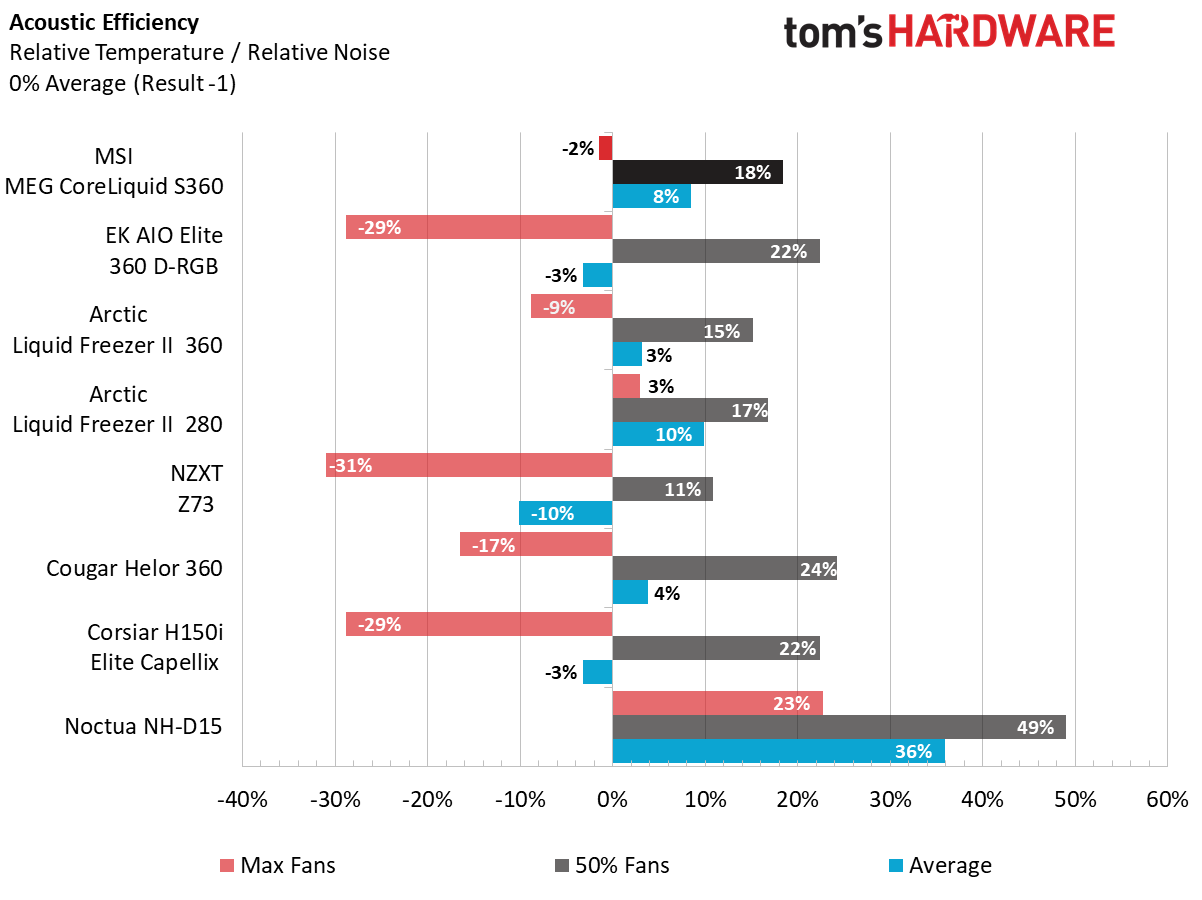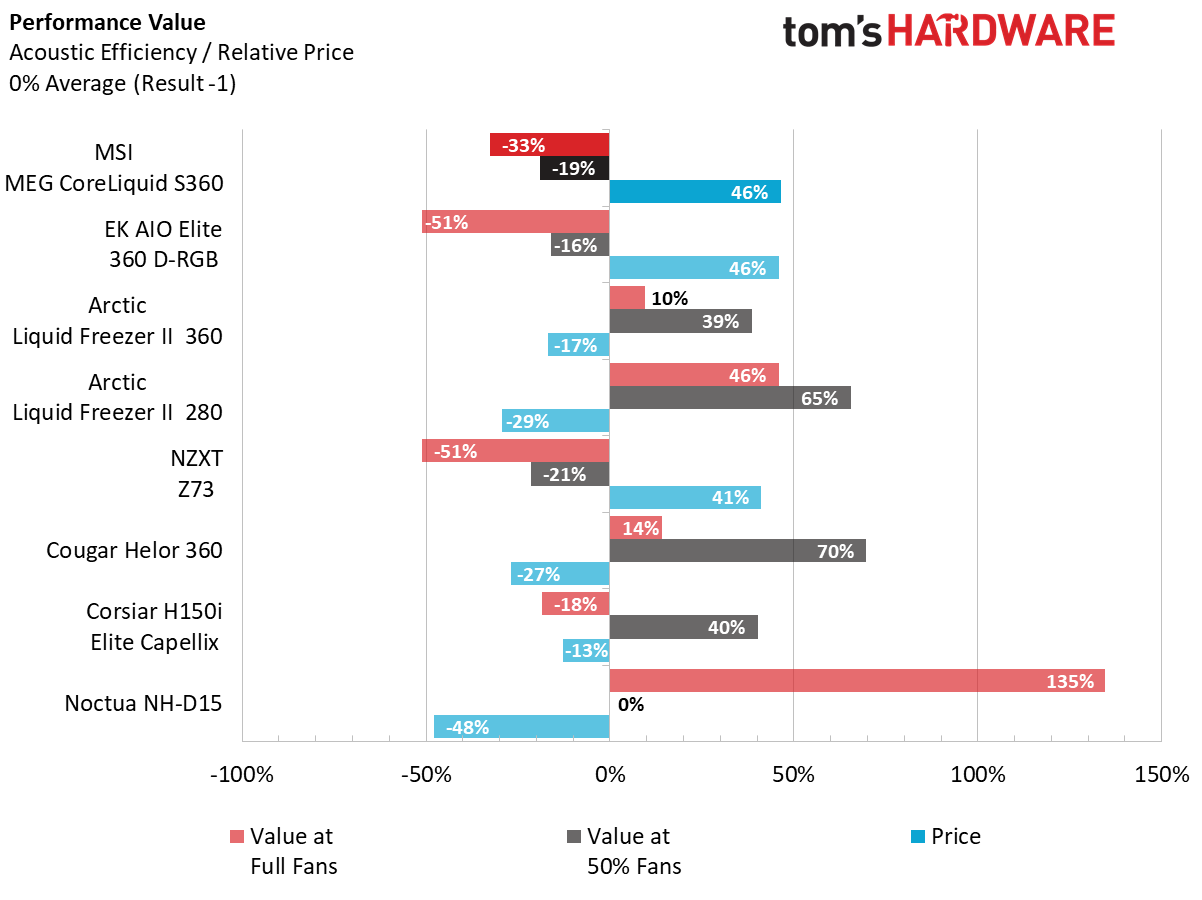Why you can trust Tom's Hardware
The MSI MEG CoreLiquid S360 just barely squeaks ahead of some 360 AIOs well-known for their outright cooling performance. In a very competitive market, the leaders of this segment are all very closely aligned in thermal performance. Interestingly enough, the Noctua NH-D15 hangs just outside the pack, while being the only heatpipe cooler of the testing group.
Fans and pump speeds of the MSI MEG CoreLiquid S360 are similar to others in this performance cooling segment, but this shows an interesting trend: Most high-performance 360 AIOs are making use of strong, 1800+ RPM fans with a focus on static pressure to move air effectively over the radiator they support. Obviously, the Arctic Liquid Freezer II 280 features 140mm fans, which traditionally are slower spinning, but as we see here, not by much.
Even with high-speed fans, most of the coolers in our testing group have the ability to still maintain some decent measured noise levels during operation, especially at 50% fan PWM. The MSI MEG CoreLiquid S360 can make use of the MSI Center’s custom fan curves to help manage fan speed (and as a result, fan noise) depending on system load. That means this chart, while it shows our standard 100/50 split, doesn’t actually represent the noise levels you’ll likely experience with the MSI cooler and a nice fan curve.
Acoustic efficiency combines thermal performance with the noise level of the cooler during the process of the work it is doing to keep system temperatures down. Here we see the most of the AIOs on the list with a strong showing at 50% fan PWM due to lower noise levels, but the MSI MEG CoreLiquid S360 keeps its 100% PWM slider pretty close to center, which is difficult when trying to focus on cooling performance with very strong fans while also trying to keep decibel levels low in the process.
Performance value takes our acoustic efficiency chart and evaluates each cooler with its retail price as part of the comparison to see how well each performs in terms of cost effectiveness. The MSI MEG CoreLiquid S360 is priced right around $280 at release, making it and the EK AIO Elite 360 D-ARGB the highest priced solutions in our comparison. But they each provide a fully-integrated software UI suite and system control, as also do the NZXT Z73 and Corsair H150i Elite Capellix. This allows for system builders to make dynamic changes from the OS rather than requiring a stand-alone fan controller or getting into system BIOS to adjust fan header curves, requiring a reboot.
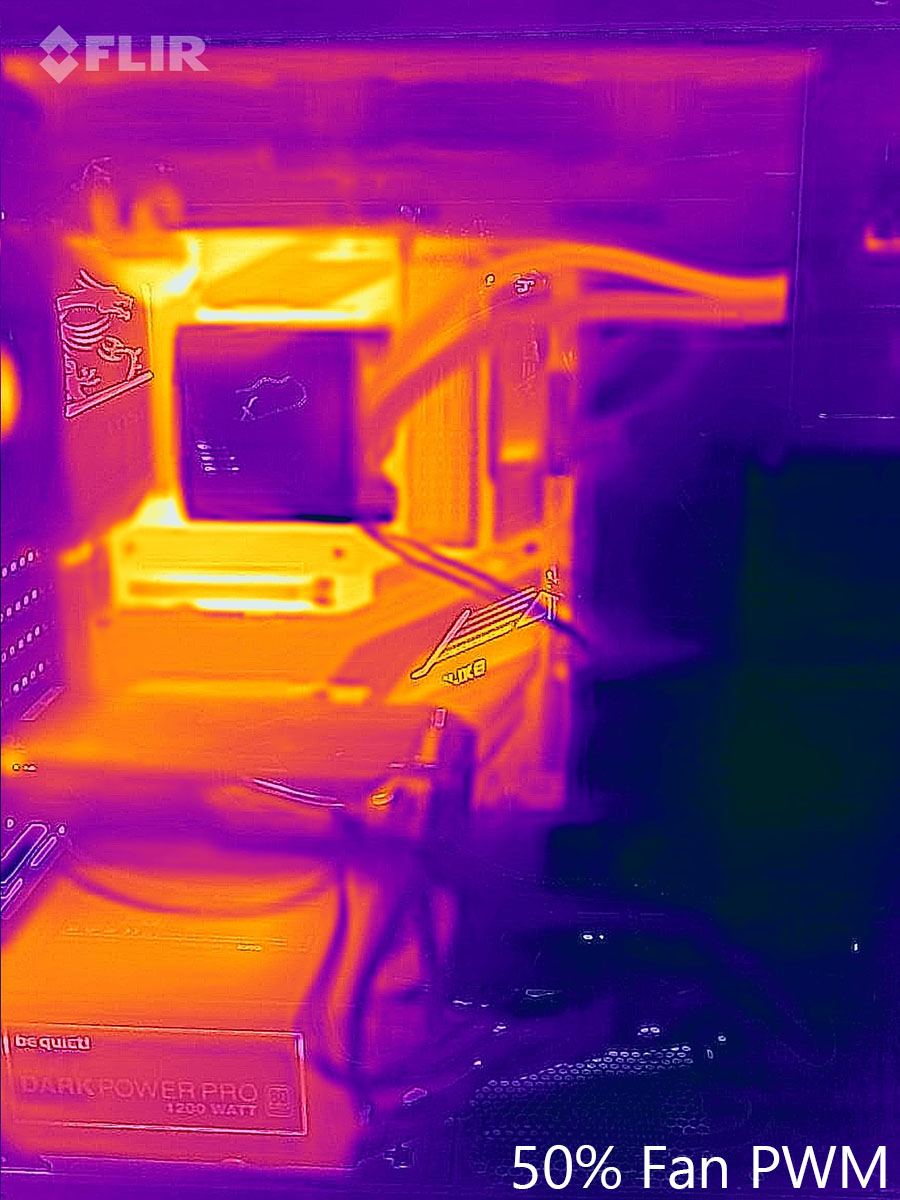
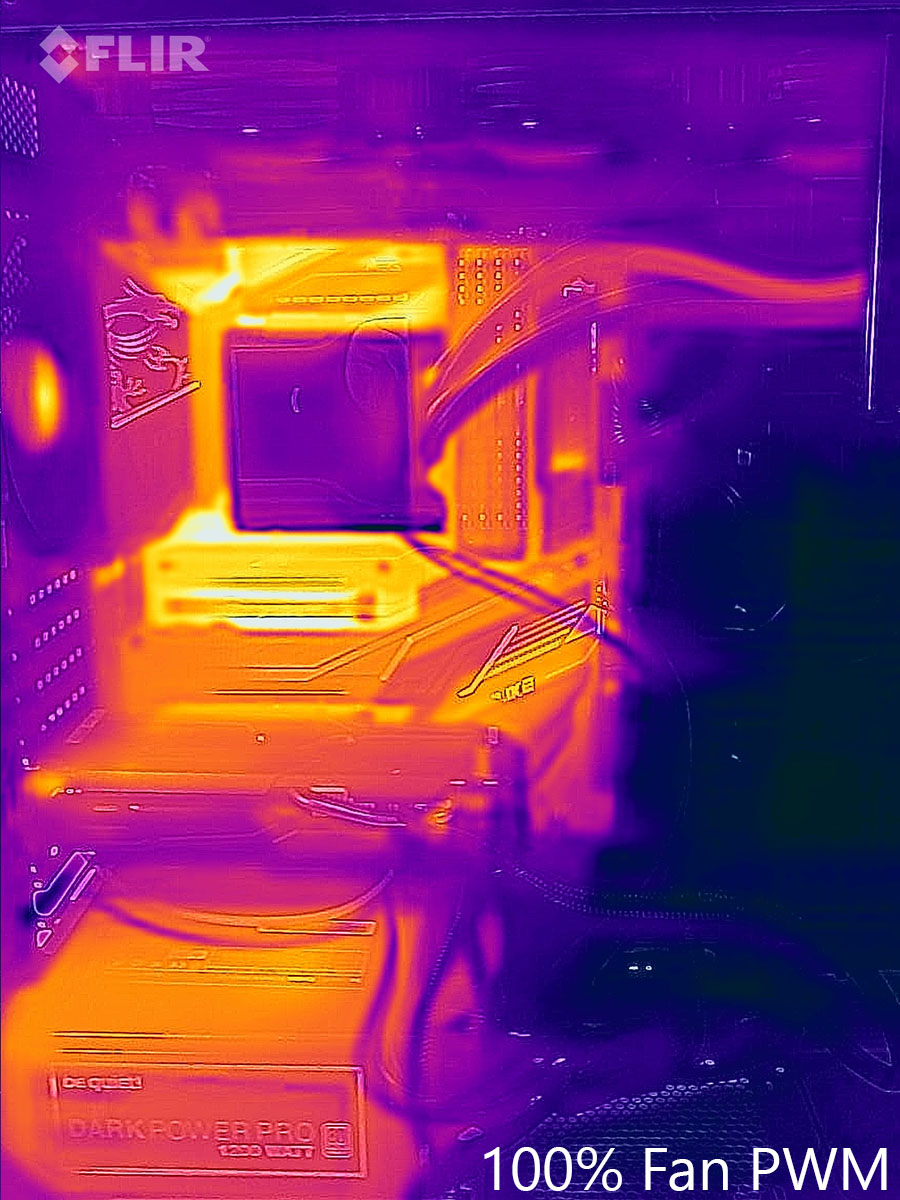
Using our FLIR ONE Pro camera, we can see some moderately higher thermal soak along the coolant tubing lines at 50% fan speeds and along the lateral edge of the 360mm radiator. We can also see a noticeable heat bloom around the edges of the pump housing at 50, where these are less evident when the cooler fans are running at full speed.
The MSI MEG CoreLiquid S360 is a very attractive cooler with easy-to-use software UI and beautiful digital display, although the price tag will likely turn many away. However, more than just a flashy cooler with its own display, it also delivers top-notch cooling performance. For those without concern for the high price, looking for excellent cooling and endless customization options via the display, the MSI MEG CoreLiquid S36 is worthy of serious consideration.
Get Tom's Hardware's best news and in-depth reviews, straight to your inbox.

Garrett Carver is a contributor for Tom’s Hardware, primarily covering thermal compound comparisons and CPU cooling reviews; both air and liquid, including multiple variations of each.
-
Phaaze88 This S SKU and the K one are the only ones that don't have the blasted Pump-In-Radiator setup, and thus are the only ones worth anything, because 'everyone' has to mount their AIO radiators at the top of the chassis for whatever reason.Reply
But the S and K are stupid expensive, because I guess, "Screw you, give me money."
To see the NH-D15S still hang in there... AIOs have gone stale. -
Blacksad999 ReplyPhaaze88 said:This S SKU and the K one are the only ones that don't have the blasted Pump-In-Radiator setup, and thus are the only ones worth anything, because 'everyone' has to mount their AIO radiators at the top of the chassis for whatever reason.
But the S and K are stupid expensive, because I guess, "Screw you, give me money."
To see the NH-D15S still hang in there... AIOs have gone stale.
I was curious about that, actually. I knew that some of their units had the pump in the radiator, which would allow for bottom mounting without issue. It's unfortunate these apparently don't, from what you're saying. :( -
Phaaze88 Reply
Not true, actually.Blacksad999 said:I knew that some of their units had the pump in the radiator, which would allow for bottom mounting without issue.
For Pump-In-Radiator...
Top mounted rad: hands down the worst of the 5. You can kiss that pump goodbye within a year.
Front mounted rad, but inlet+outlet are at the top: ok, but will become noisier later on after a few years(+/-), forcing the user to either move it, or replace it, even though the unit still works.
Front mounted rad, but inlet+outlet are at the bottom: one of the 2 best ways to position these units in part, because the pump is offset and not in the center of the rad. The problem then, is radiator size and chassis compatibility.
Sideways mounted rad(think NR200P): right there with front mount, but bottom mounted in+out - it's great.
Bottom mounted rad: the pump is saved, but now the performance goes down the drain, as air begins having a party in the cpu block disrupting the transfer of heat from the cold plate to the medium(fluid)! The party only gets bigger over time.
For the more traditional Pump-In-Block...
Top mounted rad: awesome, but you may need to over-provision on size depending on the gpu.
Front mounted rad, but in+out are at the top: ok, but the noise later on.
Front mounted rad, but in+out are at the bottom: also great, but radiator size and chassis compatibility.
Sideways mounted rad: great as well.
Bottom mounted rad: bad. Air party in the pump. -
Co BIY Someone should mount a big downward fan across the hole top of their AIO pump to bathe the power supply circuits in cool air. Would be a great place for a "sweet" RGB ring all the kids love. Should solve that socket area heat bloom.Reply
Call it the "HybridHydroAir" and watch the money roll in. If you can find workers to build it and people to unload the crates at the port at least.
